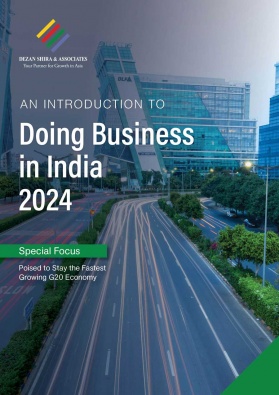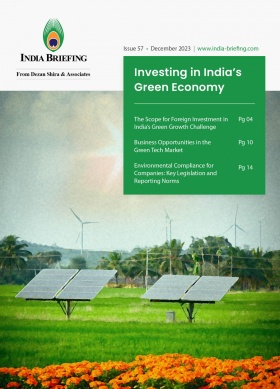India Extends Deadline for Proposal Submission on Green Hydrogen R&D to April 27
The Indian government has extended the deadline for the submission of research and development (R&D) proposals under the National Green Hydrogen Mission. As per media reports, owing to the overwhelming and encouraging response, the decision was made to extend the proposal submission by an additional two weeks.
The Indian government has issued a notification announcing the extension of the deadline for the submission of research and development (R&D) proposals under the National Green Hydrogen Mission up to April 27, 2024. The move is anticipated to allow researchers and institutions to submit high-quality applications for the advancement of the production of green hydrogen in India.
What are the goals?
On March 15, 2024, the Minister of New and Renewable Energy issued a notification calling for proposals for developing indigenous technology for the widespread development of green hydrogen and its derivatives in an efficient and cost-effective manner. The deadline for submission of proposals was extended from April 12 to April 27, 2024.
Under the Green Hydrogen Mission, the R&D scheme aims to foster a working relationship between industry, academia, and government, as well as offer support for components of the green hydrogen value chain, namely, production, storage, compression, transportation, and utilization.
Along with this, the scheme will also focus on the commercialization of technological advancements by offering the requisite policy and regulatory support.
Submission guidelines
It is worth noting that the selected R&D projects under the mission must be goal-oriented, time-bound, and suitable to scale up to achieve quantifiable returns for India to achieve its goal of green hydrogen production. The scheme has specified three types of projects.
|
Types of projects |
Project period |
Focus area |
|
Mission Mode Projects with short-term horizons |
0-5 years |
End-product development in partnership with the industry.
Development of indigenous module electrolysers and PEM-based fuel cells.
Scaling up biomass-based hydrogen generation for commercial applications. |
|
Grand Challenge Project with mid-term horizon |
0-8 years |
Development of critical technologies to overcome licensing challenges and supply constraints.
Component specific research to advance existing domestic manufacturing capabilities, improve efficiency, and drive down costs.
Development of critical components such as Membrane Electrode Assemblies (MEB), electrocatalysts, Catalyst Coated Membranes (CCM), Gas Diffusion Layer (GDL), bipolar plates, etc. |
|
Blue Sky Projects having long-term horizon |
0-15 years |
Establishing technical prowess and competitive advantage for India’s green hydrogen industry.
Develop array of subjects like development of 3rd generation electrocatalysts, reversible Solid Oxide Electrolysers (SOECs), Solid Oxide Fuel Cells (SOFC), seawater electrolysis, thermos-catalytic pyrolysis, plasma pyrolysis, salt cavern surveys, high-entropy alloy for reversible hydrogen storage, etc. |
In terms of infrastructure development, the R&D scheme specifies developing subject-specific centers as well as supporting the existing Center of Excellence in the country. In October 2023, the MNRE issued an R&D roadmap for green hydrogen, specifying the research areas.
Who can apply for proposal submission?
According to the official notification, the following institutions can apply for financial assistance to develop green hydrogen:
- Academic institutions
- Research institutions
- Government institutions
- Public Sector Undertakings (PSUs)
- Private research institutions
- Industries having adequate infrastructure/facilities.
As per the scheme guidelines, proposals submitted for the development of components under the NGHM will be vetted by the MNRE, and those shortlisted will be placed before a sectoral sub-committee, constituted by an advisory group chaired by India’s Principal Scientific Advisory.
Financial support
The R&D scheme guidelines for green hydrogen specify that academic institutions, government bodies, and non-profit research organizations would be eligible for financial support up to 100 percent of the total project cost, subject to a cap decided by the sectoral sub-committee. Along with this, the academia/national R&D partners are also eligible to receive 100 percent funding for their share of the project.
For private research institutes and organizations, however, the financial support for the total project cost would be up to 80 percent. The release of the grant pattern will be based on the milestones achieved by the institution. For the initial release of the grant, it has been decided that up to 30 percent of the total financial assistance, excluding the institutional overheads, would be released depending on the requirements of the equipment in the project.
Subsequently, other tranches of the financial assistance for project work will be annually allocated, depending on the milestone achieved by the selected group. The institutions are obligated to submit a utilization certificate of grants within a year of the release of the financial grant.
For projects costing between INR 1.5 million (US$17,988), INR 10 million (US$119,919), or up to INR 50 million (US$599,599), the guidelines state that overhead charges will be limited to eight percent. It may also be noted that projects receiving an extension of one year will not be provided with additional financial assistance.
What is the National Green Hydrogen Mission?
The ambitious project was officially launched on January 4, 2023, with a budget outlay of INR 197.4 billion (US$2.36 billion), of which INR 40 million (US$479,672) has been allocated for research and development activities for 2025–26. Under the National Green Hydrogen Mission, US$2.1 billion is allocated to the Strategic Interventions for Green Hydrogen Transition (SIGHT) scheme, which provides incentives for the production of green hydrogen. The mission aims to produce 5 MMTPA of green hydrogen by 2030.
The primary goal of the mission is to position India as the leading global hub for the production, utilization, and export of green hydrogen and its derivatives.
Other developments
Meanwhile, companies such as Reliance Industries, Larsen & Toubro, Greenko Group, and Welspun New Energy emerged as the top bidders in an international tender to construct green hydrogen and green ammonia facilities at Gujarat’s Deendayal Port Authority (DPA) in Kandla, giving India’s ambition to become a major player in the global hydrogen market a boost.
The most recent media reports state that the bids for the INR 950 billion (US$11.39 billion) procurement were opened on February 21, 2024 and that the deadline for submitting them was March 14, 2024
In response to a global request for applications to establish a green hydrogen hub at the port, DPA received 13 expressions of interest.
(US$1 = INR83.38)
About Us
India Briefing is one of five regional publications under the Asia Briefing brand. It is supported by Dezan Shira & Associates, a pan-Asia, multi-disciplinary professional services firm that assists foreign investors throughout Asia, including through offices in Delhi, Mumbai, and Bengaluru in India. Readers may write to india@dezshira.com for support on doing business in India. For a complimentary subscription to India Briefing’s content products, please click here.
Dezan Shira & Associates also maintains offices or has alliance partners assisting foreign investors in China, Hong Kong SAR, Dubai (UAE), Indonesia, Singapore, Vietnam, Philippines, Malaysia, Thailand, Bangladesh, Italy, Germany, the United States, and Australia.
- Previous Article The MedTech Industry in India: Outlook and Growth Drivers
- Next Article Environmental Compliance for Companies in India: Key Legislation and ESG Guidelines








